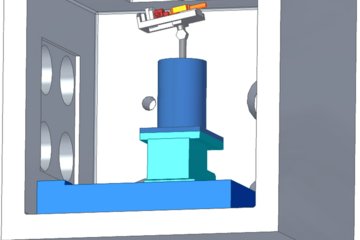All genres
21.
Journal Article
Strong impact of lattice vibrations on electronic and magnetic properties of paramagnetic Fe revealed by disordered local moments molecular dynamics. Physical Review B 93 (22), 224411 (2016)
22.
Journal Article
Effects of configurational disorder on the elastic properties of icosahedral boron-rich alloys based on B6O, B13C2, and B4C, and their mixing thermodynamics. The Journal of Chemical Physics 144 (13), 134503 (2016)
23.
Journal Article
Efficient and accurate determination of lattice-vacancy diffusion coefficients via non equilibrium ab initio molecular dynamics. Physical Review B 93 (9), 094305 (2016)
24.
Journal Article
Theoretical and experimental study of metastable solid solutions and phase stability within the immiscible Ag–Mo binary system. Journal of Applied Physics 119 (9), 095303 (2016)
25.
Journal Article
Magnetic exchange interactions and critical temperature of the nanolaminate Mn2GaC from first-principles supercell methods. Physical Review B 93 (5), 054432 (2016)
26.
Journal Article
Ab initio calculations and experimental study of piezoelectric YxIn1-xN thin films deposited using reactive magnetron sputter epitaxy. Acta Materialia 105, pp. 199 - 206 (2016)
27.
Journal Article
Transition-metal-nitride-based thin films as novel energy harvesting materials. Journal of Materials Chemistry C 4 (18), pp. 3905 - 3914 (2016)
28.
Journal Article
Phase stability of the nanolaminates V2Ga2C and (Mo1-xVx)2Ga2C from first-principles calculations. Physical Chemistry Chemical Physics 18 (18), pp. 12682 - 12688 (2016)
29.
Journal Article
Large piezoelectric response of quarternary wurtzite nitride alloys and its physical origin from first principles. Physical Review B 92 (17), 174119 (2015)
30.
Journal Article
Control of Ti1−xSixN nanostructure via tunable metal-ion momentum transfer during HIPIMS/DCMS co-deposition. Surface and Coatings Technology 280, pp. 174 - 184 (2015)
31.
Journal Article
Configurational order-disorder induced metal-nonmetal transition in B13C2 studied with first-principles superatom-special quasirandom structure method. Physical Review B 92 (1), 014202 (2015)
32.
Journal Article
Growth and oxidization stability of cubic Zr1-xGdxN solid solution thin films. Journal of Applied Physics 117 (19), 195301 (2015)
33.
Talk
Ab initio description of coupling phenomena between magnetic and structural degrees of freedom. EASTMAG2019 – VII Euro-Asian Symposium “Trends in Magnetism”, Jekaterinburg, Russia (2019)
34.
Talk
Interdependence of the spin and lattice dynamics of CrN in the high temperature paramagnetic phase. DPG Frühjahrstagung, Dresden, Germany (2017)
35.
Talk
Parameter-free Computational Design of Magnetic Materials – Recent Advances in Ab Initio Techniques of Coupled Lattice and Spin Fluctuations. MRS Fall Meeting 2016, Boston, MA, USA (2016)
36.
Poster
Interaction of magnetic and lattice degrees of freedom. International Workshop on Ab initio Description of Iron and Steel: Mechanical Properties (ADIS 2016), Ringberg Castle, Tegernsee, Germany (2016)











